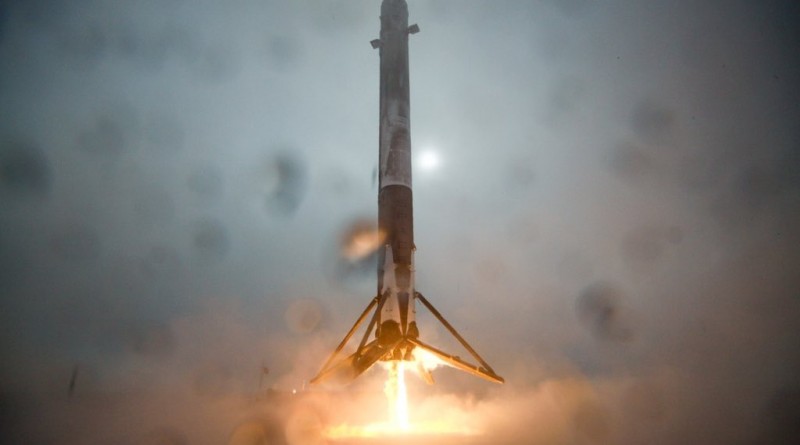Spectacular Video shows Falcon 9 Booster Land on Drone Ship, Tip Over
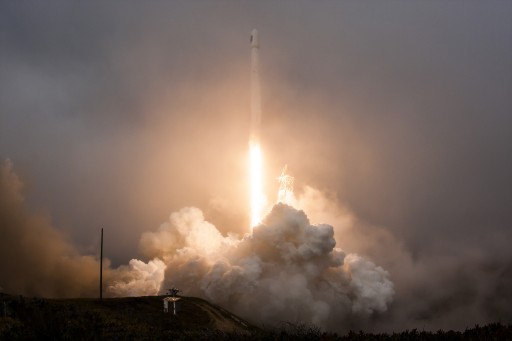
SpaceX released a spectacular video showing how close the company’s Falcon 9 booster came on Sunday to sticking its first landing atop the Autonomous Spaceport Drone Ship. After a bullseye touchdown, Falcon 9 slowly tipped over because one of its four landing legs failed to lock in place in the final moments of the rocket-powered descent to the ocean-going barge.
Falcon 9 lifted off from Vandenberg Air Force Base at 18:42 UTC for its second West Coast launch, carrying the Jason-3 Oceanography Satellite. Fulfilling its primary task of sending the second stage on its way into orbit, the first stage of the rocket separated just over two and a half minutes into the flight, 67 Kilometers in altitude at a velocity of five times the speed of sound. Performing two burns, the second stage successfully inserted the satellite into the target orbit 56 minutes into the mission, fulfilling the primary objective of the launch.
All eyes, however, were on the first stage and its adventurous landing attempt as SpaceX hoped to finally manage a successful barge landing after the first tries last year resulted in very close calls with boosters finding their way back to the drone ship but not being able to stand the landing due to technical bugs in the last seconds of descent.
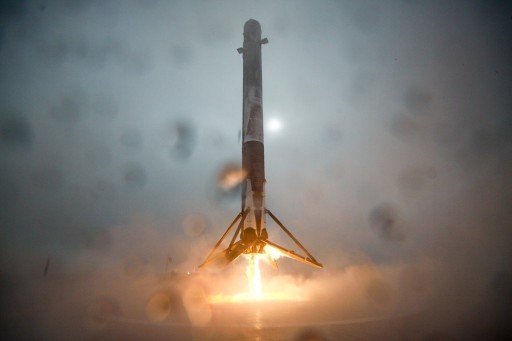
Sunday’s landing was no different as the rocket carried out all the complex maneuvers to pin-point its small floating landing pad. The booster executed a partial boost back burn of a little over half a minute with a subset of its engines to target the location of the drone ship, 300 Kilometers south of the SLC-4E launch pad. A 25-second Entry Burn provided shielding to the engine compartment from the extreme environment and also began slowing the stage. Employing its four grid-fins, Falcon 9 fine-tuned its trajectory before firing up the center engine a little over half a minute ahead of the expected touchdown.
>>Timeline Reconstruction for Sunday’s Launch
Even though seas were not the friendliest with four-meter waves, the ‘Just Read The Instructions’ Drone Ship held perfect position and Falcon 9 came down right above the prominent SpaceX logo on deck. In the final seconds, the booster commanded its four legs to deploy – making use of a pneumatic system driven by high-pressure Helium and steel lockout collets to lock the light-weight legs in place before touchdown.
All except one leg locked in place and Falcon 9 made a gentle touchdown about 1.3 meters off the center of the Drone Ship’s landing deck. The video released by SpaceX shows the final dramatic seconds of the booster’s landing perfectly vertical with a clean engine shutdown at touchdown. For a moment, it seemed the stage would manage to stand upright before it started tipping over ever so slowly.
Upon hitting the deck, the propellant tanks – still under pressure after the burn – rupture and a source of fire at the base of the vehicle triggers the ignition of residual Oxygen and Kerosene.
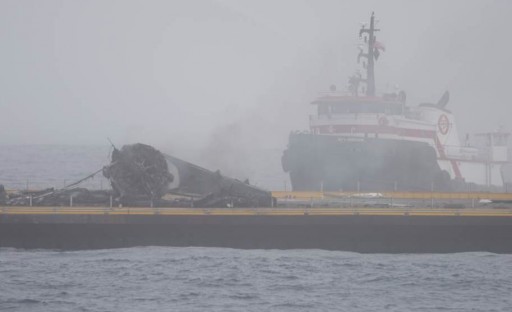
The blaze had enough energy to separate the heavy engine compartment from the booster and the thin tank structure was ripped into pieces. What remained atop the barge was the Octaweb, at least one landing leg and portions of the tanks and outer structure of the stage. These pieces, especially the engines, will give engineers another welcome opportunity to assess the condition of first stage components after a full ascent-descent cycle in SpaceX’s ongoing aspirations of re-flying Falcon 9 boosters without requiring extensive refurbishment between missions. The faulty landing leg most likely got trapped under the booster when tipping over and should also be available for inspection.
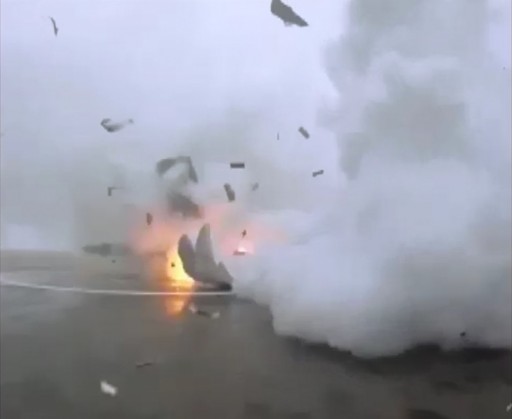
According to SpaceX CEO and Chief Designer Elon Musk the leading suspect in Sunday’s close call is an ice build-up in the internal locking collet due to condensation as the result of the intense fog that descended upon the Falcon 9 rocket approximately two and a half hours before launch.
The Autonomous Spaceport Drone Ship is expected back in port in the first half of the week to permit SpaceX engineers to get their hands on the hardware. Although not in one piece, this final Falcon 9 v1.1 stage could still be valuable on the company’s path to a booster re-flight in the not too-distant future.
Perfecting the return scheme of core stages, either to land or the downrange platform – is essential in the company’s business model that aims to cut the prices for access to space by re-flying Falcon 9 cores on a regular basis without complex refurbishment on the rockets in between flights.
Elon Musk Tweeted after Sunday’s launch that he fully expects more boosters to be destroyed over the course of the next several landing attempts, though concerns associated with landing accuracy can be alleviated in light of the previous landing attempts that all managed to reach their target – including the first ever boost-back to shore in December.
The recovered booster that became a flagship for SpaceX reusability plans last month fired up on the East Coast on Friday and went through a successful static fire, confirming that a space-flown rocket stage can be re-ignited – even after going through the rigors of re-entry as this booster did after sending a group of 11 Orbcomm satellites on their way to orbit.

